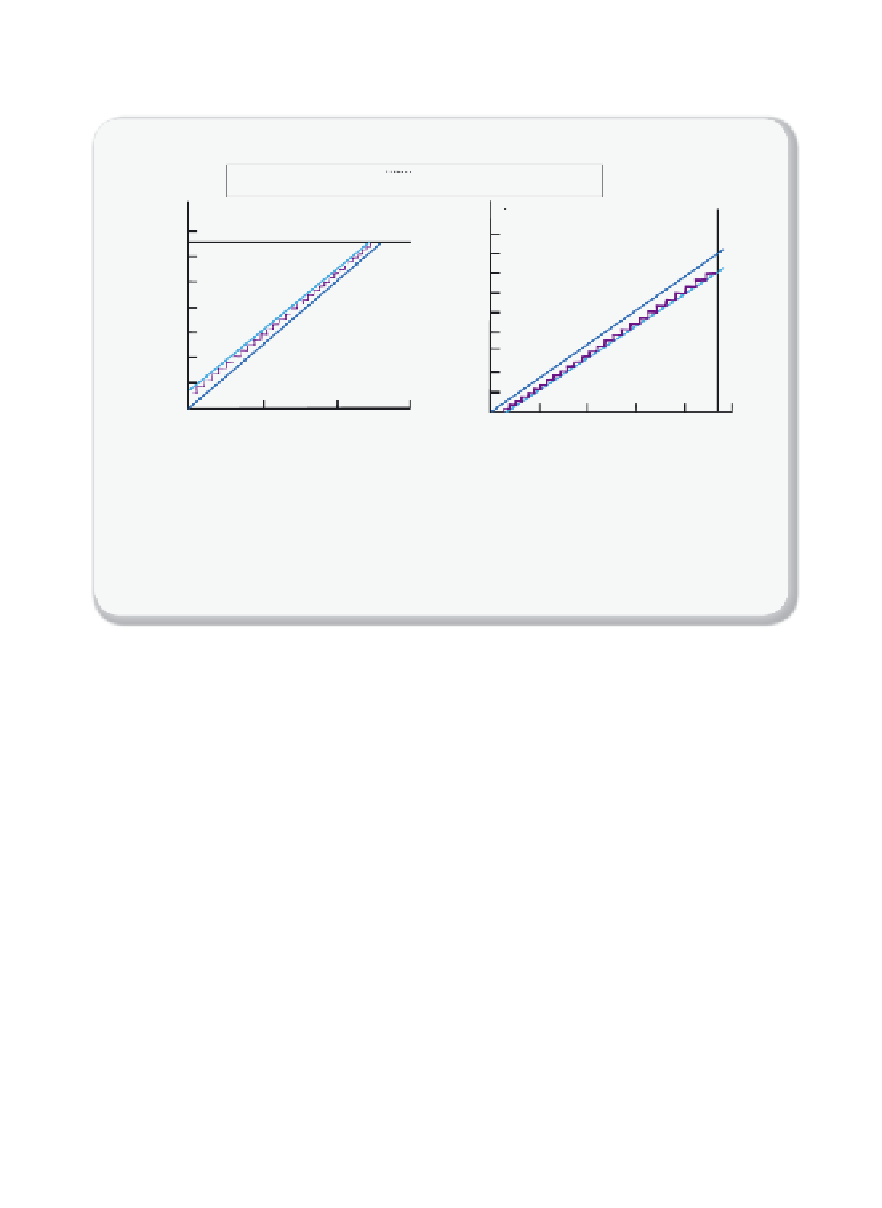Environmental Engineering Reference
In-Depth Information
(a)
Adsorber using 30% MEA
(b)
Stripper using 30% MEA
equilibrium line
maximum mole fraction
minimum mole fraction
operating line
stages
0.14
0.12
0.10
0.08
0.06
0.04
0.02
0
Bottom
Top
0.80
0.60
0.40
0.20
Bottom
To p
0
0 0.005 0.001 0.0015
0 0.00002 0.00004
Mole fraction of CO
2
in a solvent (x)
Mole fraction of CO
2
in a solvent (x)
Figure 5.8.4
McCabe-Thiele diagrams for MEA (2)
McCabe-Thiele diagrams for (a) an absorber with 33 stages operating at an L/V ratio of
11 and (b) a stripper with 27 stages operating at an L/V ratio of 51,000; both units are
using 30% MEA as the solvent and contain the same number of stages as used for the
water case in
Figure 5.8.2
.
To estimate the economic advantage of switching from water to a
30% MEA solution, we calculated the capital cost associated with the
processes described above. We started by estimating the tray diameter
and spacing using the analysis provided by Seider
et al
. [5.17]. We cal-
culated the height of the column by multiplying the number of trays by
the tray spacing. We took into account the cost of sieve trays, the ves-
sels, ladders, and platforms using cost correlations corrected for the
present day (2012) cost index (
Table 5.8.1
).
The overall cost is $3.32 million for the case in which water is the
solvent. When 30% MEA is the solvent, the cost is $941,775 when we
operate at the same L/V as used in the water case and $2.4 million when
we use the same number of trays as used in the water case. Hence, the
capital cost can be reduced by a factor of 3 by switching to 30% MEA
from water while keeping the same L/V conditions. The cost is driven
down primarily by the fact that we use a signifi cantly smaller number of
trays with 30% MEA than water. When we use the same number of trays
for both 30% MEA and water while changing the L/V ratio, we fi nd that
the capital cost drops marginally; we expect, however, that the utility













Search WWH ::

Custom Search